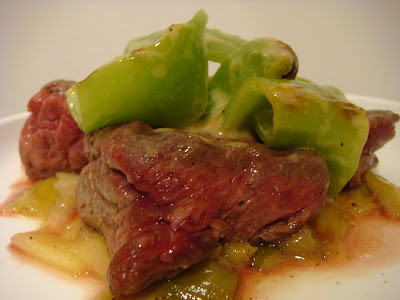
Please don't immediately click away thinking how could anyone do that to mac and cheese! This is really a fantastic recipe. I made it a while ago but haven't had a chance to tell you about it until now.
Yesterday the weather was beautiful, but today it's dropped back down a little, so maybe you're craving some comfort food. But if you don't want something too heavy, this dish is your answer.
Carrot Macaroni and Cheese (adapted from Food & Wine)
Ingredients
3/4 pound carrots, peeled and thinly sliced
Zest and juice of 1 navel orange
Salt
3 cups whole wheat penne rigate (9 ounces)
3 ounces sharp cheddar cheese, shredded (1 1/2 cups)
Freshly ground pepper
1/2 cup panko bread crumbs
1 TBS olive oil
Directions
Preheat the oven to 350°. In a medium saucepan, combine the carrots with the zest and juice and 1/4 cup of water. Season with salt and bring to a boil. Cover and simmer over moderate heat until the carrots are very soft, about 30 minutes. Discard half the zest. Transfer the carrots and any liquid to a blender and puree until very smooth.


Meanwhile, in a large saucepan of boiling salted water, cook the pasta until al dente. Drain the pasta, reserving 1 cup of the cooking water.
Return the pasta to the pot. Add the reserved water and the carrot puree and cook over moderate heat, stirring frequently, until the pasta is coated with a thickened sauce, about 5 minutes. Stir in three-fourths of the cheese and cook, stirring, until very creamy, 2 to 3 minutes longer. Season with salt and pepper.

Transfer the pasta to a medium baking dish and top with the remaining cheese. Bake until the cheese is melted and lightly browned, about 20 minutes.


Mix panko bread crumbs with olive oil, and season with salt and pepper. Sprinkle over the melted cheese. Place under broiler until crumbs are golden brown. (This happens very quickly so don't stray too far.)


Let stand for 5 minutes before serving.
I made some minor changes to the recipe, which I've added in above. One was to use whole wheat pasta instead of regular pasta. I usually don't like whole wheat pasta, but I had a box of it lying around, and I figured if I was going to make a "healthy" mac and cheese, it would help. The flavors in this dish are robust, and I hardly noticed that the pasta was made from whole wheat.
I used a zester instead of a vegetable peeler on the orange, and I left half the zest in the dish instead of removing all of it. I just thought I'd want a little more orange taste to it.
I also didn't use any tarragon, which the original recipe called for, and I used black pepper instead of white pepper. If you're concerned about the final appearance of the dish, then the white pepper is nice, but I don't mind having some black specks in there.

Then I was sort of worried the whole dish would be kind of mushy and not have much texture to it, so I mixed some panko bread crumbs with olive oil, sprinkled them on top, and broiled them to give it some crunch.
This is no gooey, creamy mac and cheese, but it is a nice, lighter change, and it still has plenty of that most important ingredient: the cheese!











































